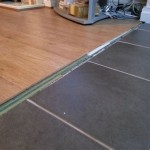Adding Texture to Your Ceiling Tiles in Revit
Ceiling tiles are a great way to add style and functionality to your space. They can help reduce noise, improve acoustics, and even add a touch of personality to your room. One way to make your ceiling tiles even more interesting is to add texture. Textured ceiling tiles can create a unique look and feel, and they can also help to diffuse light and improve acoustics.
There are a few different ways to add texture to your ceiling tiles. One option is to use acoustic panels. Acoustic panels are designed to absorb sound, and they can be made from a variety of materials, including fabric, fiberglass, and metal. Textured acoustic panels can add a touch of style to your room, while also improving the acoustics.
Another option for adding texture to your ceiling tiles is to use decorative moldings. Decorative moldings can be made from a variety of materials, including wood, plaster, and metal. They can be used to create a variety of looks, from classic to contemporary. Textured decorative moldings can add depth and interest to your ceiling, and they can also help to diffuse light.
If you are looking for a more subtle way to add texture to your ceiling tiles, you can use paint. Paint can be used to create a variety of textures, from smooth to bumpy. You can even use paint to create a faux finish, such as a wood grain or marble look. Textured paint can add a touch of interest to your ceiling, without being too overpowering.
No matter what method you choose, adding texture to your ceiling tiles is a great way to create a unique and stylish space. Textured ceiling tiles can help to improve acoustics, diffuse light, and add a touch of personality to your room.
Here are some tips for adding texture to your ceiling tiles:
- Consider the overall style of your space. Do you want a classic look, a contemporary look, or something in between?
- Choose a texture that will complement the other elements in your space. For example, if you have a room with a lot of natural wood, you might choose a textured ceiling tile with a wood grain finish.
- Consider the acoustics of your space. If you need to improve the acoustics in your room, choose a textured ceiling tile that is designed to absorb sound.
- Think about the lighting in your space. Textured ceiling tiles can help to diffuse light, which can create a more comfortable and inviting atmosphere.
- Don't be afraid to experiment. There are many different ways to add texture to your ceiling tiles. Try out different options until you find one that you love.
With a little planning, you can use textured ceiling tiles to create a beautiful and stylish space that is perfect for your needs.

How To Do Realistic Ceiling Tiles Without A Surface Pattern Autodesk Community Revit S

How To Do Realistic Ceiling Tiles Without A Surface Pattern Autodesk Community Revit S

Aligning Revit Textures With Model Hatch Pattern Fill Styles Cadline Community

Aligning Revit Textures With Model Hatch Pattern Fill Styles Cadline Community

Solved Aligning Ceiling Grid With Appearance Autodesk Community Revit S
Solved Aligning Ceiling Grid With Appearance Autodesk Community Revit S

Revitcity Com Object 2x2 Acoustical Ceiling Tile Textured

Change A Ceiling Texture To None And All The Fixtures Need Be Deleted Autodesk Community Revit S

Revit Custom Ceiling Grids Micrographics

Aligning Revit Textures With Model Hatch Pattern Fill Styles Cadline Community
Related Posts








